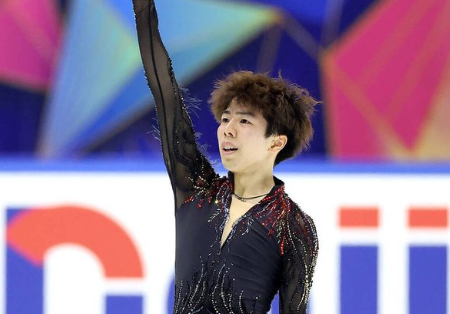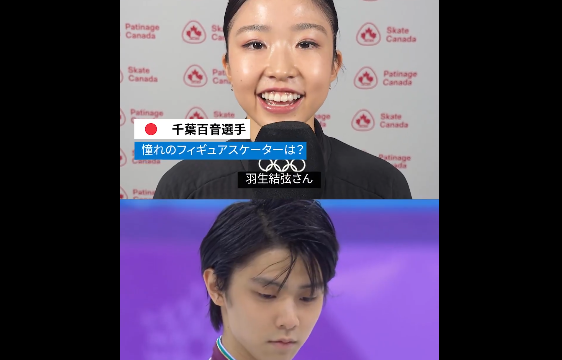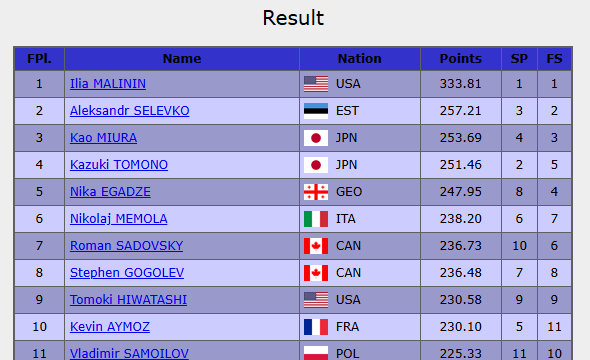こんばんは~おひさですう。
木・金曜日と月曜日は猛烈社員まっつあお(死語)な深夜まで仕事をして撃沈。
もう落ち着いたとは思うけど月曜日まで油断はできぬ。。。ゼエハア。
そういうわけで幕張を楽しみにする余裕もない(締め切りが心配でのおおおおお!)。
まあ、そんなもんだ。
趣味はリアル生活に影響するし、また逆もしかり。
でも金曜日うまくいったら夕方から高笑い状態よおおおお。
ちなみに幕張は1日だけ行きます(・Д・)ノ
本当は氷艶やプオォォォォォォォォオオオのことを語りたいがもう水曜日だよママン。。。
都会はええよのう!フィギュアスケート歌舞伎とか見られてさ!ケッ!
アイスショーの演出のことが話題になっていますが、
6月に鹿児島ではPIW鹿児島があるのですが、一昨年見たPIW鹿児島で思ったとですよ。
「田舎だからこそ踊りじゃなくてフィギュアスケートにしかできない高い技術を見せてほしい」
ということを。
お世話になっている先生の社交ダンスの先生なぞは、「私はダンスを見にきたんじゃない、ダンスは陸でもたくさん見られる。滅多に見られないフィギュアスケートを見たいのに。」と言うとりましたわwwww
現役選手が多いとどうしても演出が限られてしまうけど、現役ならではの技術の鋭さ、存在感=現役感、というのは代わるものがないものだと思います。
氷艶のようなエンタメもいいけど(大賛成!)、氷とブレードの高い技術を見せつけるアイスショーもいいと思うのですよ。
でも演出は頑張ってほし~FAOIは歌手の人選も謎だし、照明もせめて幕張くらいはプロジェクションマッピングとか使ってもいいんでないの?とおもふ。
去年の夏にライストで見た中国のアイスショーに演出の面で負けてんで!とおもた。。。
あと、羽生君は平昌後に引退するなら町田君をアーティスティックディレクターに迎えるとヨロシ。
さてさて、そんなPIW鹿児島、金曜日にまた重大発表があるらしく!?
【#プリンスアイスワールド2017】
先日、ロシアの皇帝プルシェンコの出演が決定!ますます盛り上がりを見せている鹿児島公演に重大発表が・・・!追加出演発表なのか?!詳しくは26日(金)15:50〜の『かごピタ』で発表!お見逃しなく!!#KYT #PIW #鹿児島公演 pic.twitter.com/BLx9rv7fH6— KYTイベント事務局 (@KYT_EVENT) 2017年5月24日
いったいなんだらう??
しょま君かな(だったら嬉しい!)?もしやデカ、大ちゃん、というのもあったりして!
ま、羽生君はなかろーもwwww(死人が出るど。)
ぴたっと鹿児島の録画は予約済みよおおおおお!ドキドキ♪
アメリカの調査会社の金メダル予想ニュースもきていまして、羽生君の金メダル、ハビの銀メダル、しょま君の銅メダルが予想されていたらしいですが、ま、1年前だからはっきり言ってわからんとおもふ。
羽生君のは信じるけど←、2位3位は何があるかわからないからの~こればかりは鉄の女、メドベでも断言できない。
○平昌五輪の金、米社が予想 羽生、高梨、あと1人は?
笠井正基2017年5月23日16時41分(朝日新聞)
日本が来年2月の平昌(ピョンチャン)五輪で獲得する金メダルは三つ。それはだれ?
米国のスポーツ情報提供会社「グレースノート」が五輪9カ月前時点でのメダル獲得予想を発表した。それによると、日本の金メダルは、フィギュアスケート男子の羽生結弦(ANA)、ノルディックスキー女子ジャンプの高梨沙羅(クラレ)、フリースタイルスキー女子ハーフパイプの小野塚彩那(石打丸山ク)だった。
日本の銀メダルは四つで、女子ジャンプの伊藤有希(土屋ホーム)、スピードスケート女子の小平奈緒(相沢病院)、同女子の団体追い抜きとフィギュア団体。銅メダルは三つで、フィギュア男子の宇野昌磨(中京大)、フリースタイルスキー男子モーグルの堀島行真(中京大)、ノルディック複合の渡部暁斗(北野建設)だった。
昨季のワールドカップ(W杯)で出場8戦全勝の小平が「銀」と予想されたスピードスケート女子500メートルの金メダルは、五輪3連覇を狙う李相花(イサンファ)(韓国)となった。
金メダルの獲得数を国・地域別で見ると、3個の日本は13位。ドイツが14個で首位に立ち、ノルウェーが12個で2位、米国が10個で3位と続いた。開催国の韓国は7個で6位だという。
あと、特に男子シングルでは平昌オリンピックの結果と密接に関係している前年のGPF、名古屋GPFについて、こんなツイートが。
新着情報: ISUグランプリファイナル国際フィギュアスケート競技大会2017愛知・名古屋支援委員会を設立し、第1回委員会を開催します https://t.co/54YvtCvwta ←詳細はこちら
— 愛知県庁 (@pref_aichi) 2017年5月24日
ふむふむ、恐らく特定のところ(愛知のフィギュアスケート団体)にがっぽりとチケットを売る、という過去のようにはならないと思います。
しかし、福岡GPFのように地元枠はあるでしょう、でも招待券を過去(2010NHK杯)のようにがっぽり確保、ということにはならないとおもふ。なぜなら税金が投入されているからwww
そして、やっと本題。
ジャパンタイムズのジャック・ギャラガーさんが岩野桃亜ちゃん達と羽生君のことについて素晴らしい記事を掲載しています。
日本の記者よりよっぽど凄い(時々偏愛に満ちた記事も書かれるけどそこはまあご愛敬ww)。
特にガーディアン紙のジョン・カリーと羽生君について綴られた記事とジョン・カリーのエピソードとの下りは、フィギュアスケートの長い歴史への造詣が深いゆえ書けるものですよね。
サッカーもですが、特にイギリスのジャーナリストはこういう深い記事を書かれる印象です。
日本の一部の記者さんが好き嫌いで語ってしまうのは、知識が限られているからだとおもうんだ。。。だから好き嫌いしか語る言葉がないんだよなあ、うん、単純に面白くないwww
そしてフィギュアスケートの歴史にも造詣が深い佐藤信夫コーチのコラムの方が圧倒的にオモシロかったりするんだよねwww
桃亜ちゃんは3Aと4Sを練習中。将来は海外に拠点を移すと。
ガンバレ~!!
○Iwano confirms quad salchow for free skate next season
BY JACK GALLAGHER(THE japan Times)
(一部抜粋)
Curry honored: The late John Curry, the 1976 Olympic gold medalist, was recognized with a prestigious blue plaque, the Birmingham (England) Press reported last week.
A blue plaque is an oval sign installed in a public place in the United Kingdom to commemorate a link between that location and a famous person or event.
The Birmingham Civic Society gave the award in honor of Curry’s achievements. In a space of 40 days in 1976, Curry won the European, Olympic and world titles.
The idea was first proposed by actor and writer Tony Timberlake, the paper reported, who debuted a one-man play called “Looking For John” last year. The play is the latest instance of a much-deserved renewed interest in Curry’s career.
In 2015, a book on Curry’s life, “Alone: The Triumph and Tragedy of John Curry,” was released. Written by Bill Jones, the tome is an extraordinary piece of work and is highly recommended.
Curry was a true artist at a time when male skaters were discouraged from doing anything much beyond jumps and spins. Fellow Olympic gold medalist and world titlist Yuzuru Hanyu has been favorably compared to Curry in the past.
After Hanyu set a world record at the 2015 Grand Prix Final in Barcelona, Spain, the Guardian’s Richard Williams likened it to the magical night when Curry won the Olympic gold in Innsbruck, Austria.
“. . . Hanyu unfurled a long program that fulfilled all the promises Curry had ever made about the potential of his sport to attain the condition of art,” wrote Williams.
“The swiftness, the flow and the precision of the Japanese champion’s movements, in a program containing three quadruple jumps and seven triples, had the same effect on his audience as the Englishman’s game-changing displays of grace, poise and exquisite line,” Williams wrote. “And for both men, the beauty of their performance provided an elegant cloak to hide all the countless hours of hard work that had gone into the creation of such supreme athletic prowess.”
It’s a pity that Curry, who died in 1994, is not around to see Hanyu’s skating. He would have loved what the majestic Hanyu has done for his sport.
If Curry only could see Hanyu hydro-blading, doing Biellmann spins and Ina Bauers, not to mention the quads, I have no doubt he would say, “Bravo, Yuzu. Bravo.”
最後に著者のジャックさんが、亡くなったカリーさんが羽生さんの演技を観れないのが残念でならないと。
クワドは言うまでもなく、羽生のハイドロブレーディングやビールマンスピン、イナバウワーだけをカリーが観たとしても、間違いなく「ブラボー、ゆづ、ブラボー」と言うだろうと。
偉大なアーティストであったジョン・カリーの母国の方がこのようなことをおっしゃる、ということが素直に嬉しいです!
そういえば、ミーシンには「エモーショナルな豹」と言われながらも、羽生君はロシアや熊川哲也さんやジョン・カリーやロビン・カズンズを知るファンからのラブコールが多い印象です。
やはり美しさこそ正義なのかもしれませんな。
ジョン・カリーの動画を少し。
John Curry (GBR) / Gala / 1976 Winter Olympics(MrAGGOD様)
「シェヘラザード」
John Curry Nocturne(quillerpen様)
ガーディアン紙の元記事はこちらです。
ウェブ記事はいつか消えてしまうので長いですが保存したいと思います汗汗。
記者のリチャード・ウィリアムスさんが書かれた記事のタイトルを読むとあらゆるスポーツ、音楽の記事を書かれていますが、フィギュアスケートについて書いたのはこれ1本のみ。
2015GPFでの滑り、結果がいかに大きなインパクトがあったか、ということを物語っていると思います。
○Yuzuru Hanyu offers timely reminder of John Curry’s grace and greatness
Richard Williams Friday 4 December 2015 12.16 the guardian
Yuzuru Hanyu offers timely reminder of John Curry’s grace and greatness
The Japanese figure skater’s record performance last weekend had the same effect on his audience as the game-changing displays of the late Englishman, who 40 years ago this month was making final preparations for his historic treble
If you wanted to see a memorial to John Curry, it was provided by Yuzuru Hanyu in Nagoya last weekend. During the NHK Trophy, the penultimate event of the international championship season, the 20-year-old Japanese figure skater became the first man to record over 200 points in the free skate, and the first to top 300 overall. Above and beyond mere marks, however, Hanyu unfurled a long programme that fulfilled all the promises Curry had ever made about the potential of his sport to attain the condition of art.
The swiftness, the flow and the precision of the Japanese champion’s movements, in a programme containing three quadruple jumps and seven triples, had the same effect on his audience as the Englishman’s game‑changing displays of grace, poise and exquisite line. And for both men, the beauty of their performance provided an elegant cloak to hide all the countless hours of hard work that had gone into the creation of such supreme athletic prowess.
Forty years ago this month Curry, then aged 26, was making his final preparations for the burst of competitive activity that would define his career. Within the space of 50 days, on rinks in Geneva, Innsbruck and Gothenburg, the Birmingham-born skater would secure the European, Olympic and world titles. In the midst of those triumphs, his life would be thrown into turmoil when his homosexuality was revealed in an interview with a news agency journalist, earning him headlines of a different kind.
At the age of seven, after glimpsing Margot Fonteyn on television, Curry had decided he wanted to be a ballet dancer. His father, deeming it an unsuitable pursuit for a boy, squashed that ambition. Then the child discovered skating, which his parents found acceptable. Through his success in bringing the visual poetry of the ballet to the ice rink, Curry would win the affection of the British public. More than 20 million people tuned in on the evening of 11 February 1976 to watch his climactic performance in Innsbruck.
If you were among those 20 million, you are unlikely to have forgotten the plain black and white costume, the stately carriage, the almost defiantly unexotic elegance of Curry’s programme. From the opening triple jump to the climactic double axel, the TV commentators were enthralled by the man who was about to claim the gold medal. “We’ve never seen skaters do this kind of thing,” one American expert gasped. “What an artist,” his colleague sighed.
Curry’s preparations for his historic treble included the unusual step of signing up for a course of EST, a controversial self-realisation programme. Invented by a former car salesman named Werner Erhard, EST had been in operation only four years before Curry took it up while living and training in New York. Somewhere between L Ron Hubbard’s Scientology and Arthur Janov’s Primal Therapy, it helped conquer the nerves that were the product of a young life filled with uncertainty and anguish as well as glory and artistic fulfilment.
His father had owned a factory making accounting machines. A PoW in Poland for three years, Joseph Curry later became an alcoholic. His attempts to “cure” what he saw as his fine-featured son’s effeminacy prefaced those made by an early skating coach. John was 16 when his father was found in a London hotel room, dead from an apparently deliberate overdose of chloral hydrate, prescribed for chronic insomnia.
“We were delighted,” Curry is alleged by the writer Bill Jones to have told a close friend. “We were free of him.” According to Jones in Alone, a brilliant biography of Curry published last year, the skater’s subsequent career was “a magnificent never-ending revenge; a thing of mythic beauty constructed for a father who was no longer there to see it.”
By 1974 Curry was spending much of his time in the United States, either in Colorado, where he trained at a rink in Denver under the tutelage of Carlo and Christa Fassi, or in New York. But his Olympic gold medal, only Britain’s second at a Winter Games, made him a hero back home.
His new fans seemed to care less about the sudden disclosure of his homosexuality than the newspapers did. Ian Wooldridge, the Daily Mail’s great sports writer, attended the Innsbruck press conference at which Curry was questioned about it and reported that the skater gave “his second stunning performance in 19 hours. He had taken on the world’s hard newsmen and beaten them at their own less artistic game.” A few months later Curry would win the BBC Sports Personality of the Year award, ahead of the distinctly macho James Hunt, who had just won the Formula One world championship.
With the three titles in his possession, Curry turned professional. The impresario Larry Parnes – a former Svengali to a generation of British rock and rollers, including Billy Fury and Marty Wilde – took control of his affairs in time to launch the John Curry Theatre of Skating at the Cambridge theatre in London. Despite choreography from the Royal Ballet’s Kenneth MacMillan, it was not a success. After turning up to accept an award at a sports writers’ Christmas dinner, only to be welcomed by a comedian as “the fairy on top of the tree”, his attitude to Britain became more embittered.
New York was his escape route. “In America, your individual merits are respected,” he said. There would be plenty more ice shows, in front of star‑studded audiences, as well as summers on Fire Island and nights at New York’s leading gay discos in the last days before Aids cast its lethal shadow.
In 1981 his own debilitating symptoms began to appear. He returned to Britain to play Puck at Nottingham Playhouse and Lysander at Regent’s Park Theatre. A new company, based in Colorado, appeared at the Albert Hall and the Metropolitan Opera House with its Symphony on Ice, the creative peak of his career.
But an attempt to create his masterpiece, an ice-ballet version of Stravinsky’s The Firebird, was destroyed by the company’s growing debts and in 1991, in serious physical decline, he returned home to his mother’s house in Warwickshire, where he died three years later, aged 44.
Hanyu, blessed with boy-band looks, wore an oyster-coloured tunic trimmed with purple and glittering with jewels as he spun like a sycamore seed in a light breeze through the jumps that studded his historic long programme. And nobody, the morning after, was going to confront him with coded questions about masculinity and athleticism. In a darkening world, there at least was a point of light.








コメント
おはようございます。
お仕事大変そうですが幕張来られるということ楽しみですね。
今回ガーディアン誌の邦訳記事をネットで拝見して初めてジョンカリーの生涯をウィキで調べて詳細を知りました。
まるでリトルダンサーそのものの様な人生だなと思いました。
フィギュアの面白いところはフィジカルな部分だけを競うだけでなくプログラムにこのようなカルチャーを溶け込ませる事が出来るところなのかもしれないなと思いました。
時代や地域性全てを越えて良いものは良いと言えるそんなプログラムを滑る事が出来るスケーターに羽生君がなってきたと云うことなのかなと思います。
氷艶来期は染五郎さんのスケジュール的に難しいそうですが今後もこの様な芸域を越えたコラボが続くと良いですね。
ちいこさん、乙―――――っ!!!
観てきたで、観てきたで氷艶みてきたでっw
ごめんねごめんねー都会人でごめんねー(住んでるのは田舎だけどね)
しかし、ワシも九州でやってたらさすがに観にいかなかったわ。。。
『氷艶』すごかったでしゅ。面白かったでしゅ。行ってよかったでしゅ。
肝心の内容ですが。。。内容ないよーでした(←これわかった?ダジャレわかった?)
そう!内容がないのが逆にすばらしかったんじゃ!w
歌舞伎で有名な役どころがめちゃくちゃに出てくるんですよ。
仁木弾正が出てきたかと思ったら、義経だーなんだー石川五右衛門までw
はちゃめちゃなのですが、見事に勧善懲悪のストーリーの中におさまっておるのじゃ。
滑るだけじゃなくて、空飛ぶしぃー、プロジェクトマッピングありーの、和太鼓の演奏ありーの、メイクや衣装も豪華だし、殺陣のスピード感もすごいーで、「おお!おお!」言いっぱなしで、飽きませんでしたー!
なんちゅうか、歌舞伎のオイシイところとフィギュアのオイシイところが、ギュッとつまったような演出でした。
よっ!高麗屋! 染五郎おぬしなかなかやりおるのう… ←こんなカンジっす
荒川さんが「誰がよかったとかじゃなくて面白い演目だったな。と感想を言ってもらえたらうれしい」とおっしゃってたのですが、実際、演目として非常に面白かったとです。
…とはいえ、あらかーさんが一番おいちい役どころ。というか新境地?みせてもらったような。。。
荒川さんは女神と蛇神姫という対照的な2役を演じていたのですが、悪役の蛇神姫がすごいハマリ役だったんですよw
確かに、悪役って「悪の華」というだけあって、おいちい!正義の味方より全然かっこよかったですわ。
面白かったのでプログラムも購入したのですが、その中でこの企画の構想はナント!2013年からというのが書かれていました。。。そんなに前からとは、しゅごくないですか?
企画したのは荒川さんと大ちゃんの所属事務所ですよ。。。この事務所ってなんのかんの言ってやり手ですわ。。。(D1SKバナーは最悪の発明でしたが…)
2013年からの企画ということは、大ちゃんの現役時代から引退後のことも見越した形で企画が立てられていたということなんですよねぇ。
そこでふと考えちゃったのは、ゆづのことでしたわ。。。ゆづは現役の間は今の体制でいいと思うけど、引退後大変かもなーと…(余計なお世話ですけども)
ということで、ちょいレポでしたー(ちょいでもないのか?)
幕張行かれるんですね?ワシは明日いきまーす!た・の・し・み!ですな。
とにかく仕事ガンガレ!ガンガレちいこさん!
ちいこさん、お仕事お疲れ様です。
私、しばらく鹿児島に帰省しておりました。
灰降らんで良かったです。(^^)/
TVでPIW鹿児島の宣伝してましたー。
友人が昌磨君を観たがっています。INしてくれるのかなあ?
Faoi幕張私も1日だけ行きます!!